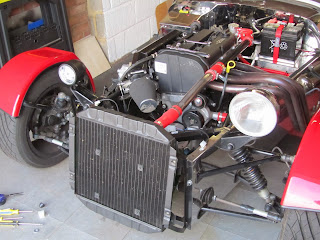I have an FIA cutoff/kill switch between the battery and the car for security purposes as much as anything. The downside is this means when the FIA cutoff is open no power to the immobiliser 'flashing led' or the radio memory. The option I'm taking is a polyswitch across the FIA cutoff to supply a continuous low current voltage event when the battery is otherwise isolated:
The polyswitch behaves like a self resetting fuse, permitting approx 3A current before it effectively breaks the circuit by heating up and increasing its own resistance. This allows a standby current to virtually everything but prevents the engine being started. Once the polyswitch cools down after a second or so its back to normal. I found one which is rated 16v 3A stable, tripping current 5A.
Functionality is
FIA switch open - (3A max draw) radio memory, immobiliser flashing light works, trips if you try to start the engine.
FIA switch closed - everything functions normally including starting/running the engine.
Fitting
Learning
This arrangement is not compatible with a full cutoff circuit that also grounds the alternator via a large resistor. If both the grounding resistor and polyswitch are left in place when the FIA switch is opened (key removed) the grounding resistor draws the tripping current permanently and everything gets very hot. (Learned the hard way - but before any magic smoke was released :)
I'm assuming the FIA switch is a break before make, so no simple way around this - seems you either setup the car with a cutoff that will actually stop the engine & not harm the alternator, or as I have now as an isolator switch which should not be opened when the engine is running.
Update - removed when the fusebox was next open and now these permanent feeds have their own direct fused circuit from the battery.
Update - removed when the fusebox was next open and now these permanent feeds have their own direct fused circuit from the battery.






























